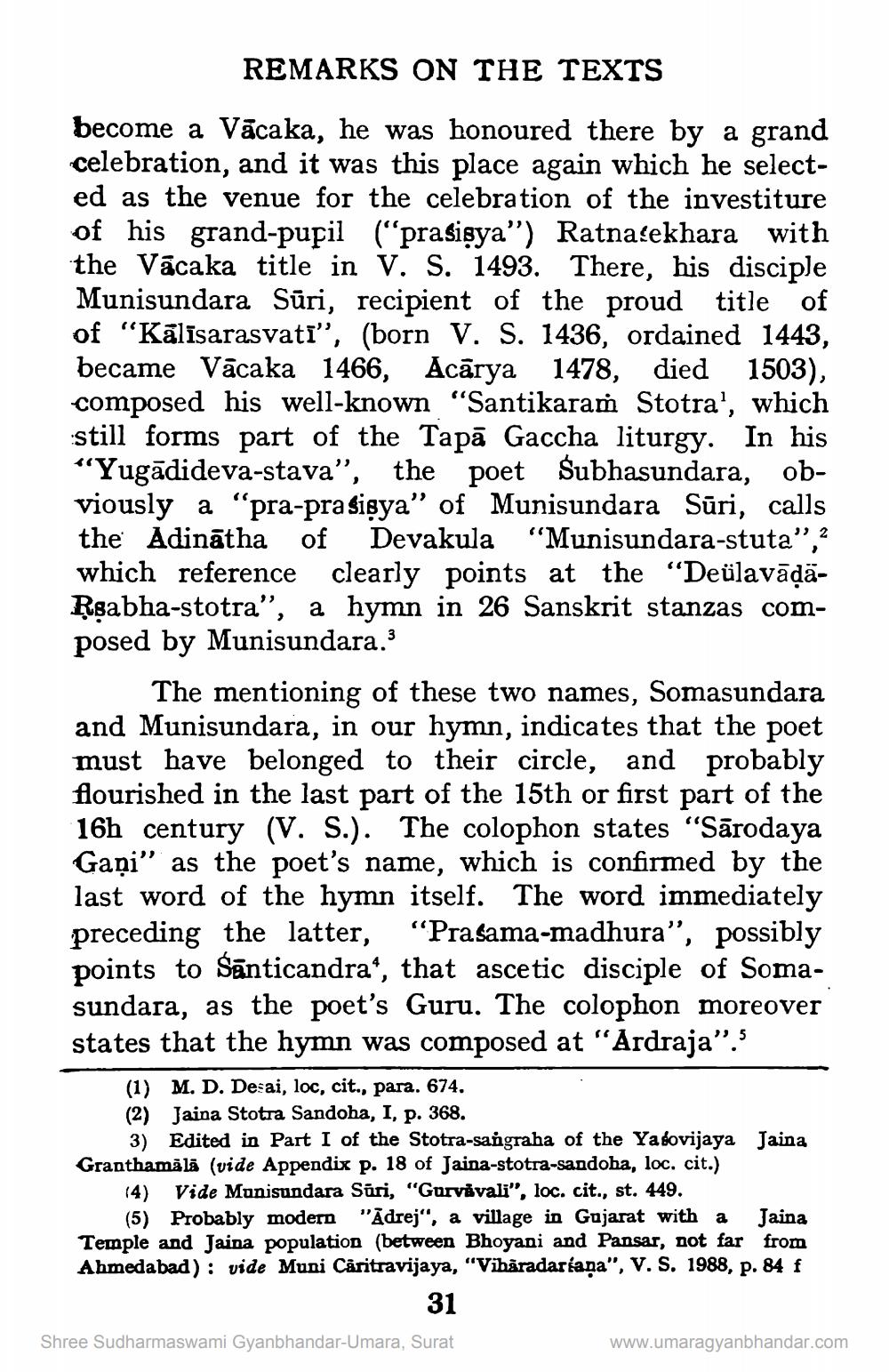________________
REMARKS ON THE TEXTS
become a Vācaka, he was honoured there by a grand celebration, and it was this place again which he selected as the venue for the celebration of the investiture of his grand-pupil (Oʻprasisya") Ratnalekhara with the Vācaka title in V. S. 1493. There, his disciple Munisundara Sūri, recipient of the proud title of of "Kālīsarasvati", (born V. S. 1436, ordained 1443, became Vācaka 1466, Acārya 1478, died 1503), composed his well-known "Santikaram Stotra', which still forms part of the Tapā Gaccha liturgy. In his “Yugādideva-stava”, the poet Subhasundara, obviously a "pra-pra sigya" of Munisundara Sūri, calls the Adinātha of Devakula "Munisundara-stuta",? which reference clearly points at the "DeülavādaRsabha-stotra", a hymn in 26 Sanskrit stanzas composed by Munisundara.3
The mentioning of these two names, Somasundara and Munisundara, in our hymn, indicates that the poet must have belonged to their circle, and probably flourished in the last part of the 15th or first part of the 16h century (V. S.). The colophon states "Sārodaya Gaņi" as the poet's name, which is confirmed by the last word of the hymn itself. The word immediately preceding the latter, "Prasama-madhura”, possibly points to Sānticandra”, that ascetic disciple of Somasundara, as the poet's Guru. The colophon moreover states that the hymn was composed at "Ardraja”,5
(1) M. D. Desai, loc, cit., para. 674. (2) Jaina Stotra Sandoba, I, p. 368.
3) Edited in Part I of the Stotra-sangraha of the Ya dovijaya Jaina Granthamåla (vide Appendix p. 18 of Jaina-stotra-sandoba, loc. cit.)
(4) Vide Munisundara Sari, "Gurvivali", loc. cit., st. 449.
(5) Probably modern "Ādrej", a village in Gujarat with a Jaina Temple and Jaina population (between Bhoyani and Pansar, not far from Ahmedabad) : vide Muni Cåritravijaya, "Vihåradariana", V. S. 1988, p. 84 f
31
Shree Sudharmaswami Gyanbhandar-Umara, Surat
www.umaragyanbhandar.com




